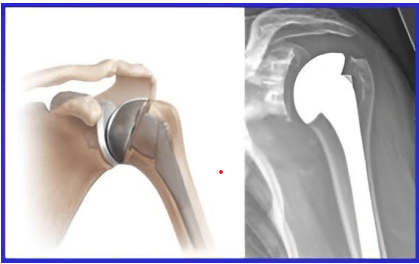Shoulder Joint Replacement: Who Benefits and What to Expect
Shoulder pain and stiffness can slowly take away the joy of simple activities,lifting your arm, dressing up, or even sleeping comfortably. When medications, physical therapy, and other non-surgical treatments fail to provide relief, shoulder joint replacement may be the solution. This advanced surgical procedure can significantly reduce pain and restore mobility, helping patients regain independence and quality of life.
What Is Shoulder Joint Replacement?
Shoulder joint replacement (also called shoulder arthroplasty) involves removing damaged parts of the shoulder joint and replacing them with artificial components. The shoulder is a ball-and-socket joint—the head of the humerus (upper arm bone) fits into the socket of the scapula (shoulder blade). Over time, arthritis, injury, or other conditions can damage this smooth movement. Replacement surgery restores function by resurfacing or replacing these worn-out structures.
Types of Shoulder Joint Replacement
There are different surgical options depending on the condition:
- Total Shoulder Replacement: Both the ball (humeral head) and socket (glenoid) are replaced with prosthetic parts.
- Partial Shoulder Replacement (Hemiarthroplasty): Only the damaged ball portion is replaced.
- Reverse Shoulder Replacement: The positions of the ball and socket are switched. This is especially useful for patients with large rotator cuff tears and severe shoulder arthritis
Who Benefits from Shoulder Joint Replacement?
Your doctor may recommend shoulder joint replacement if you have:
- Severe shoulder arthritis (osteoarthritis, rheumatoid arthritis, or posttraumatic arthritis)
- Rotator cuff tear arthropathy (arthritis due to long-standing cuff tears)
- Severe fractures of the upper arm bone that cannot be repaired
- Chronic shoulder pain and stiffness not relieved by medications, injections, or physical therapy
- Difficulty performing daily activities such as combing hair, lifting light objects, or reaching overhead
Benefits of Shoulder Replacement Surgery
- Significant pain relief
- Improved range of motion and strength
- Ability to perform daily activities with greater ease
- Enhanced quality of sleep due to reduced night pain
- Long-lasting results—most modern implants last 15–20 years with proper care
What to Expect After Surgery
Recovery from shoulder replacement is a gradual process that requires patience and commitment:
- Hospital Stay: Usually 1–3 days after surgery.
- Immobilization: The arm may be kept in a sling initially.
- Physical Therapy: Begins soon after surgery, focusing first on gentle motion, then strengthening.
- Return to Activities: Most patients can resume light daily activities within 6 weeks and full function in 3–6 months.
- Long-Term Outlook: With proper care and rehabilitation, patients enjoy significant improvement in shoulder function and pain relief.
Shoulder joint replacement is a highly effective solution for individuals struggling with severe shoulder arthritis, fractures, or chronic pain. By restoring mobility and reducing pain, this procedure allows patients to return to an active and fulfilling lifestyle.
If persistent shoulder pain is affecting your daily life, consult a shoulder specialist to determine whether shoulder joint replacement is the right option for you.

